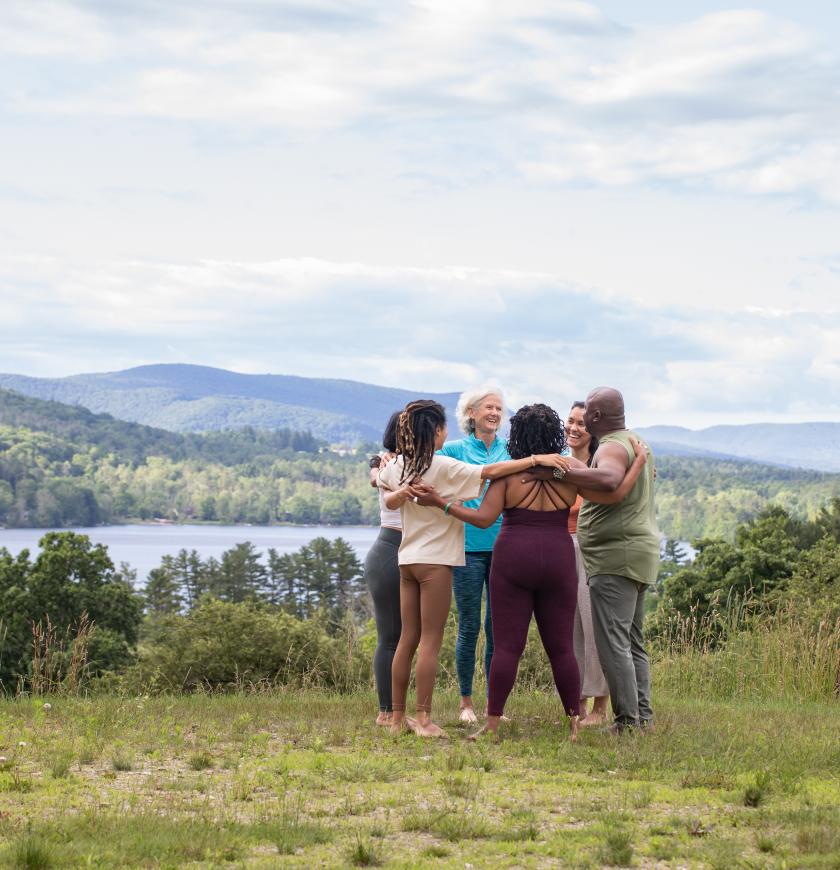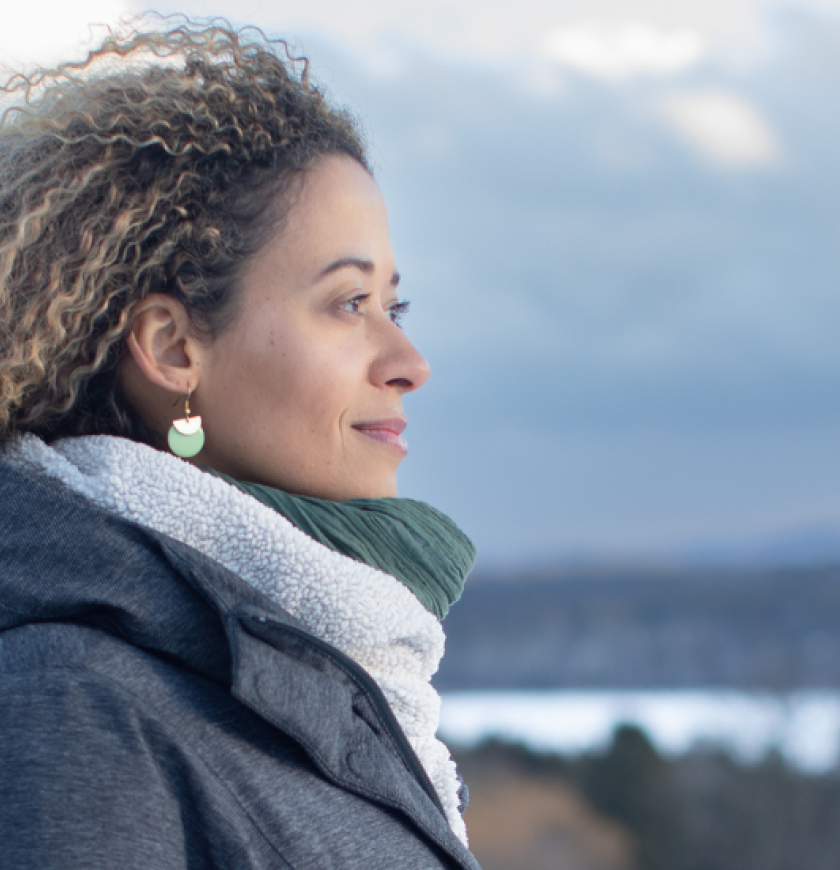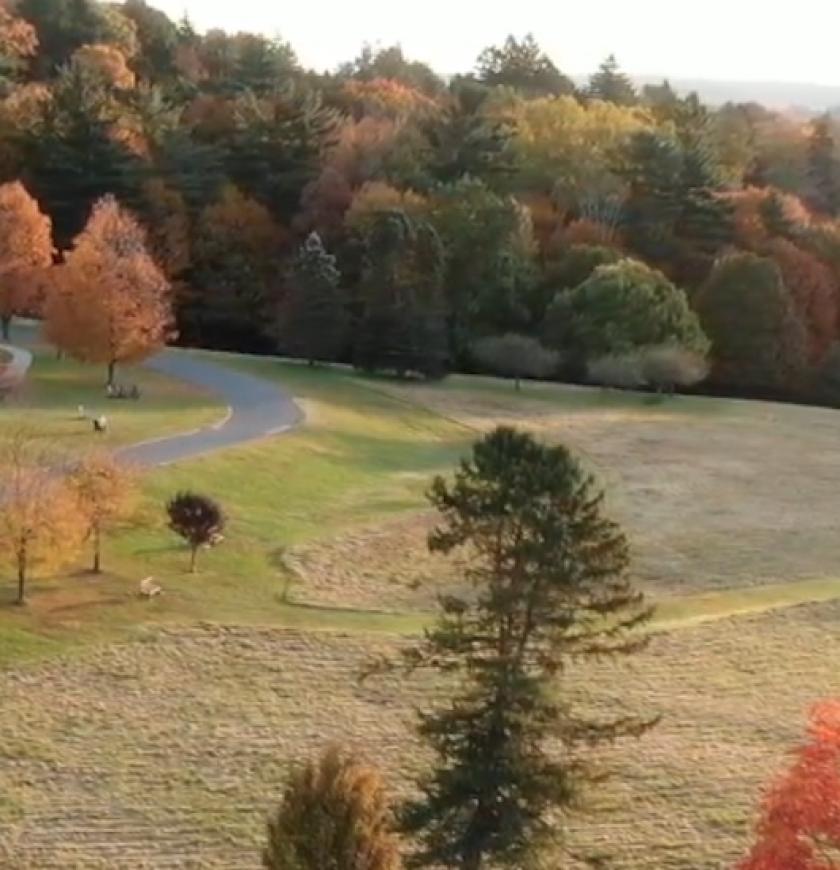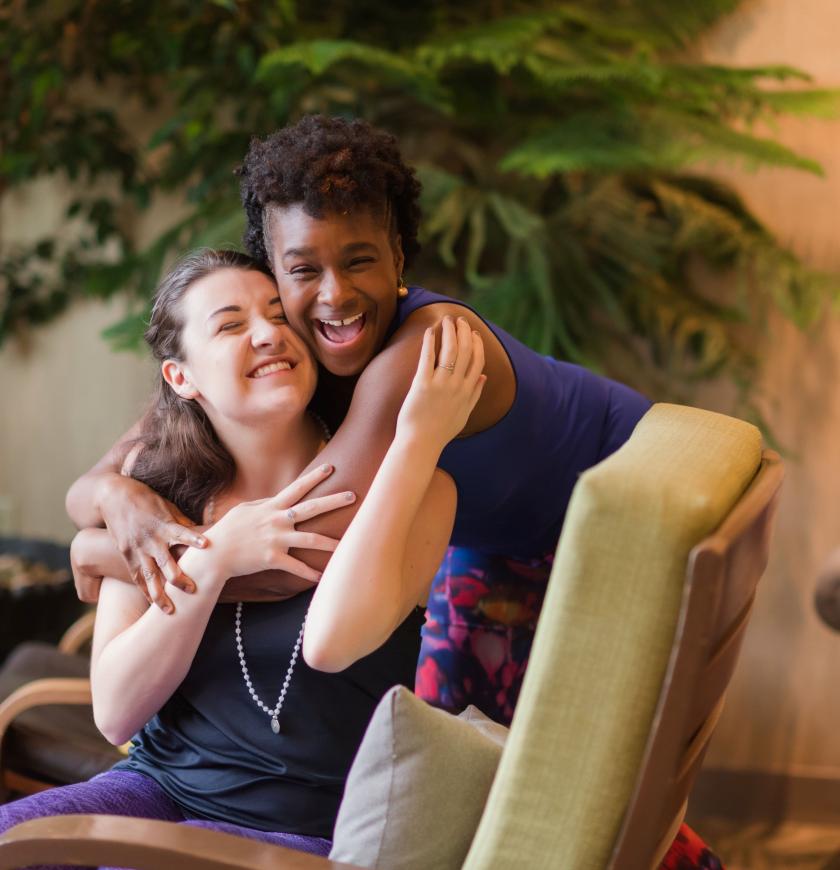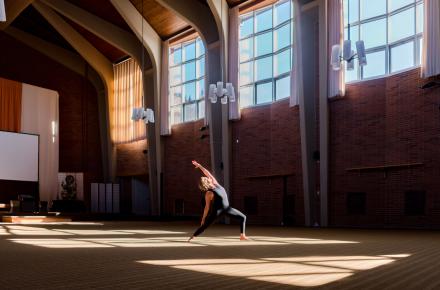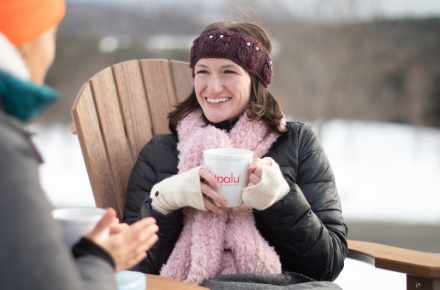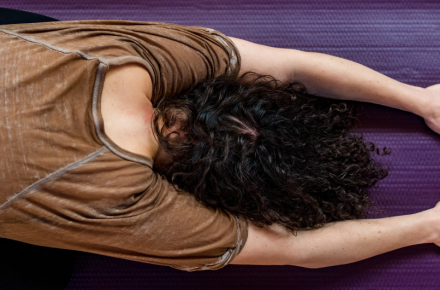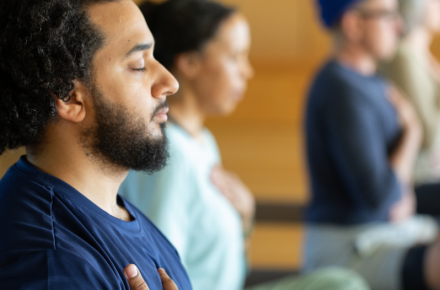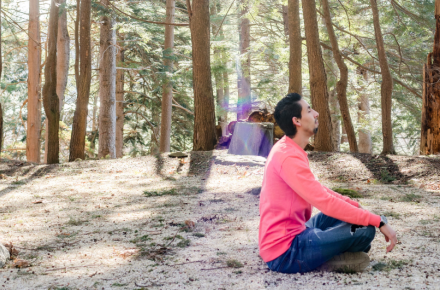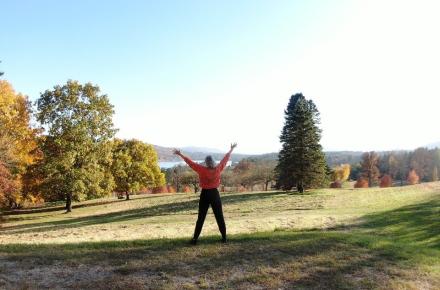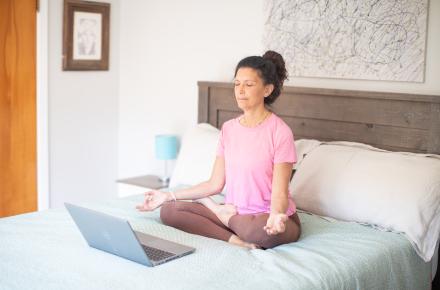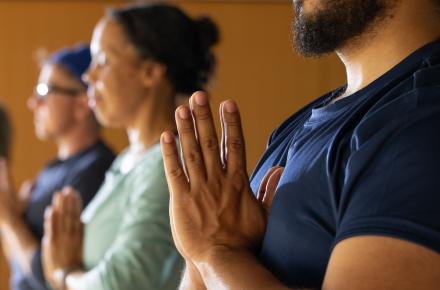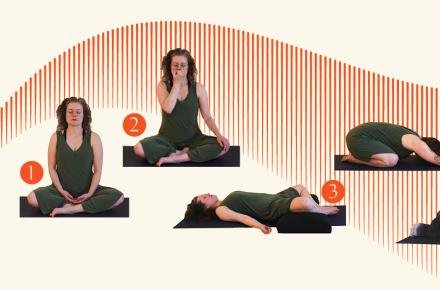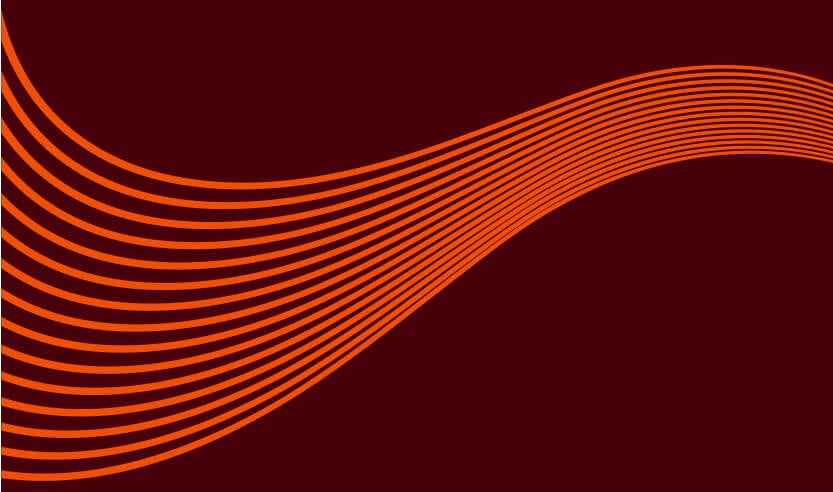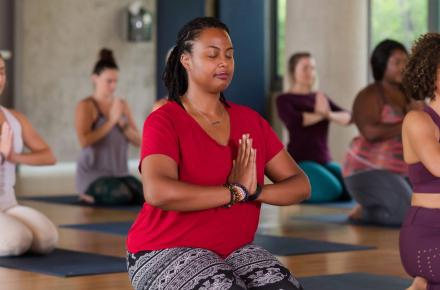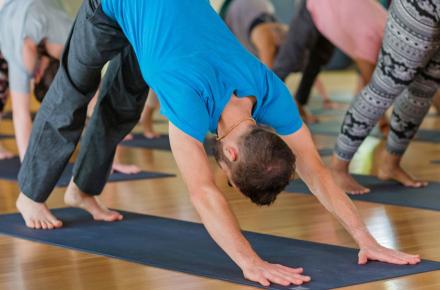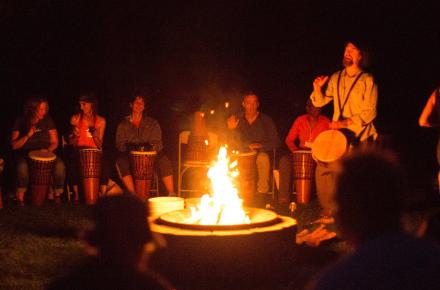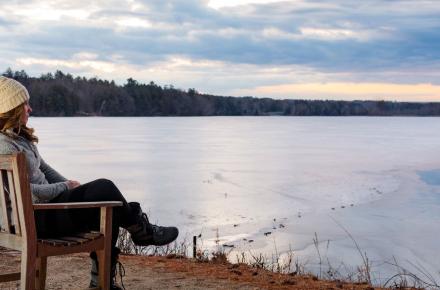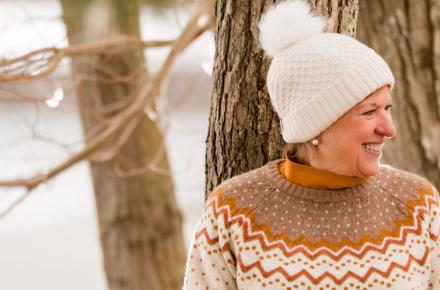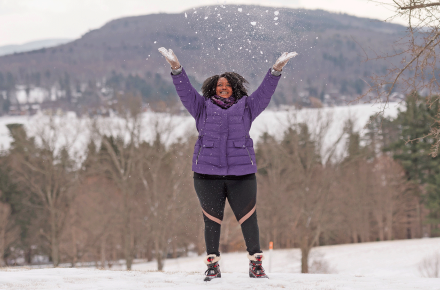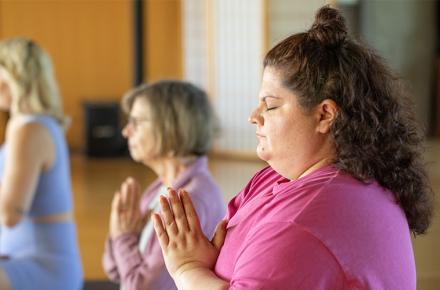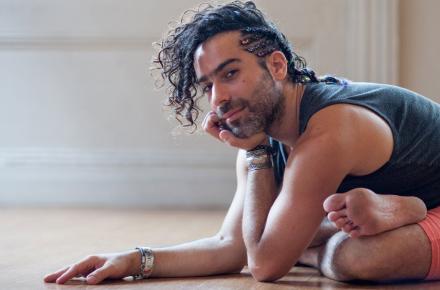My Imperfect Forward Bend

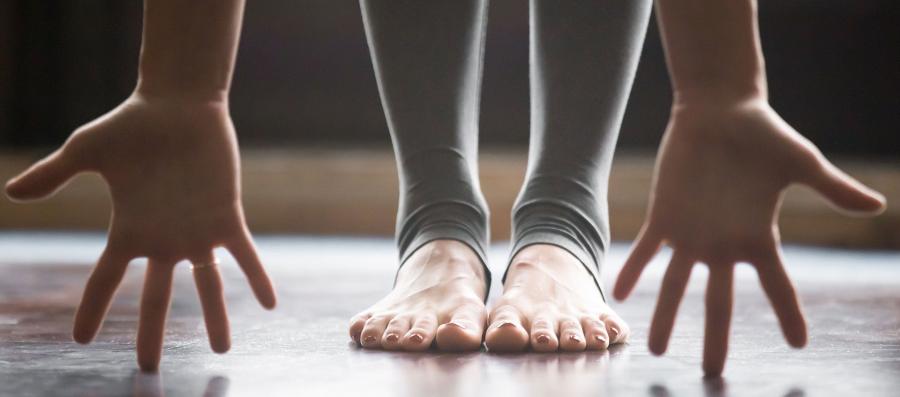
My first yoga teacher introduced me to Forward Bend in the summer of 1983. Until that afternoon, I’d never paid much attention to my hamstrings, but I quickly made their acquaintance. If I kept my spine elongated and rotated my hip joints as my teacher, Sue, instructed, I could barely come forward at all. New though I was to the practice of yoga, I was acutely aware that I looked nothing like the picture of the posture in the one yoga book I owned.
And as for my inner experience? The backs of my legs screamed in protest.
“Find your edge,” Sue coached. “It doesn’t matter that you can’t come forward very far. Just come to the point where you feel the stretch in your hamstrings, and stay with those sensations. And remember to breathe. It’s natural to hold your breath when you first go into a posture, especially one that’s challenging.”
My body was beginning to shake. I felt as if there was a crowd of onlookers inside my head, each with something to say. “Come out of this posture now, before you hurt yourself,” one voice warned. “You are such a wimp,” another voice criticized. “Push further. Do it right!”
“Don’t just endure the posture,” Sue said. “Use your breath to be really present with what’s going on in your body and your mind. We’re not going to hold much longer.”
“Thank God,” I thought. My legs were visibly shaking now, as if my hamstrings were releasing little nervous bursts of energy. I caught myself holding my breath. As I inhaled, I noticed an almost imperceptible shift. My legs were still shaking, but I relaxed inside the effort and, for a few moments, the inner voices grew quiet.
Also known as Paschimottanasana, Forward Bend was a pose I mostly avoided after that, or practiced a version that wasn’t quite so challenging. Avoidance worked fine until the middle of my monthlong Yoga Teacher Training program at Kripalu in 1987. We were learning the details of each posture and spent the better part of a morning on this pose. Around me, other students held their feet or placed their foreheads on their knees. Not me. If I didn’t cheat by rounding my lower spine, my hands only reached my shins. I was deeply embarrassed, and felt like a sham. My fellow students could strike flawless poses while I struggled with my modified Forward Bend, certain that I would never succeed as a yoga teacher.
“Don’t force it,” one of the YTT instructors whispered in my ear as tears coursed down my cheeks. “Everyone’s body is different. That’s your Forward Bend. You’re working as hard as the people who are holding their toes. The posture will come in its own good time for you, or not,” she said kindly. “It’s no measure of your worth as a person or as a yoga teacher.” Her words penetrated my fog of self-rejection just enough that I could take a deep breath and stay present to what was going on inside.
Despite my imperfect Forward Bend, I received my certification and headed home to share what I’d learned with a small class I was teaching at the local public library. Summoning all my courage a few weeks later, I introduced the Forward Bend, demonstrating the posture and explaining the details.
“Most of you will be able to come further forward than I can,” I said. “You’ll be able to hold your ankles or your feet. My hamstrings won’t let me do that, so putting my hands on my shins is my full expression of this posture. Your posture will look different because it will fit your body.”
After the session, a woman who had only attended a few classes came up to talk. “I finally feel like I belong here,” she said. “When you did that Forward Bend, I realized you have limitations just like I do. That allowed me to accept my body in a way I never have before. I always judged myself when I couldn’t do the postures right, but you were so matter of fact about your limitations that something shifted for me. I stopped berating myself, quit trying to be different, and just did the posture the best I could. Thank you,” she said. “I’ll never forget this class.”
Forward Bend has taught me many lessons over the years. It has made me look at my reasons for doing postures in the first place. Was I trying to whip my body into shape or was it my intention to love this flesh-and-bone vessel of spirit? Was I attempting to prove something or simply explore sensations, physical limitations, and the boundary between the physical realm and what’s true and limitless?
It’s only been in the last few years that I’ve made peace with the fact that while I will never look like the models in Yoga Journal, I do know how to stay with uncomfortable sensations in my body. I’ve grown skilled at remaining present in the face of difficult emotions. I’ve learned to let go of expectations in favor of my present moment experience.
I still practice Forward Bend, though it will never be my favorite posture. These days, I do all my yoga postures knowing that they are supports, not ultimate answers. My experience is that freedom doesn’t come from a yoga pose, no matter how perfectly executed. Freedom comes, I think, from relentlessly saying yes to life as it manifests in all its imperfect perfection, and from celebrating the whole of it with joy―even my tight hamstrings, even the voice of self-judgment that still whispers in my ear sometimes as I elongate my spine, lift my tailbone, hinge forward at the hips, and find my full forward extension to be only a few inches from where I started.
Find out about programs with Danna Faulds at Kripalu.
© Kripalu Center for Yoga & Health. All rights reserved. To request permission to reprint, please e-mail editor@kripalu.org.
